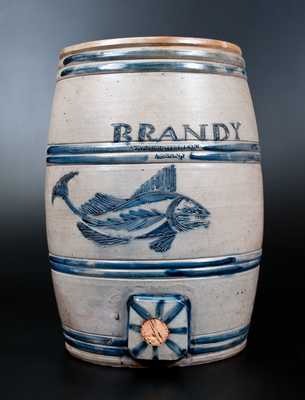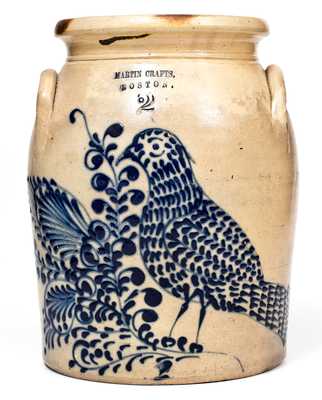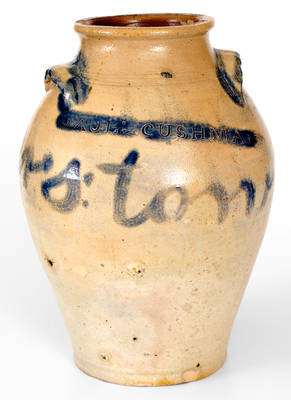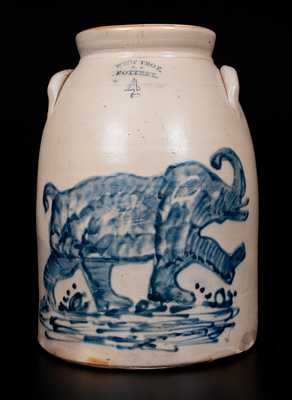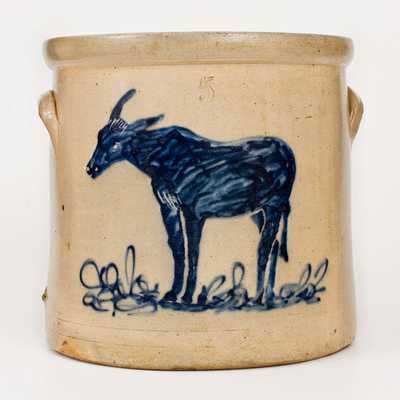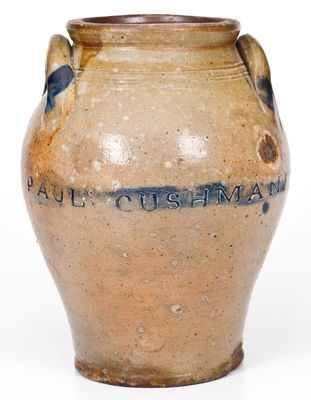Exceptional Two-Gallon Stoneware Jar with Elaborate Incised Sailing Ship Decoration, Inscribed "AGP," probably William Capron, Albany, NY origin, circa 1800-1805, ovoid jar with footed base, heavily-tooled shoulder and rounded lug handles, decorated with a large incised and cobalt-highlighted design of a sailing ship at sea. Inscribed above with the cobalt initials, "AGP." Reverse decorated with an incised and cobalt-highlighted foliate motif, accented with impressed circles on the tips of the leaves. Displaying distinctive Capron handle construction and form, this jar features one of the most elaborate incised ship designs that we have seen. The size of the ship itself is impressive, measuring 9 3/4" around the curve of the vessel. The multi-leveled ship includes numerous windows throughout the hull and stern, a dingy attached by rope at its base, a rope ladder hanging overboard, impressed anchor chains descending into the water, and a raised anchor above. Of particular note are the flags on the ship, indicating it is a British vessel. A Union Jack flies at the bow and smaller flags appear at the end of the bowsprit, while a variant of the Union Jack, known as a Red Ensign, flies at the stern. The Red Ensign or "Red Duster" flag has been used by merchant and passenger ships in Great Britain since 1707. The idea that the vessel depicted is a civilian, rather than a war, ship is corroborated by the fact that no gun ports are depicted. All of the rectangular openings on the ship are incised with panes of glass. As Albany is located on the Hudson River, a major trade route since the 17th century, such a sight would have been commonly seen at the city's port. The brushed-cobalt initials, "AGP," likely refer to the jar's owner, but also possibly its maker. A wonderfully-decorated work of historic significance, revelatory of the relationship between England and America in the few decades after its founding. Chipping around foot. A shallow 3/4" chip to rim on side of jar. A minor in-the-firing surface chip (contact mark) to front. A minor nick to one handle. A vertical surface line on interior, not visible on exterior. H 11 3/4".













